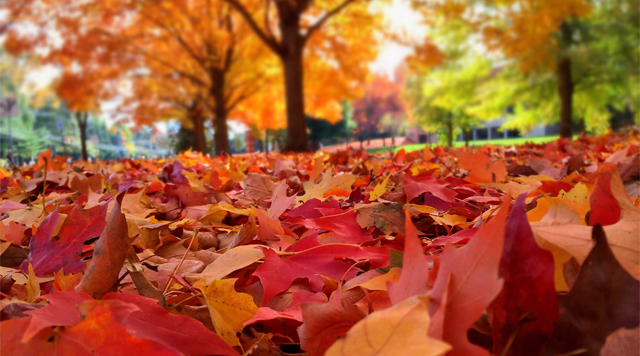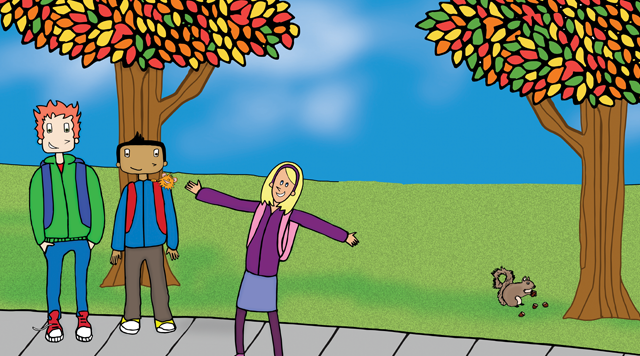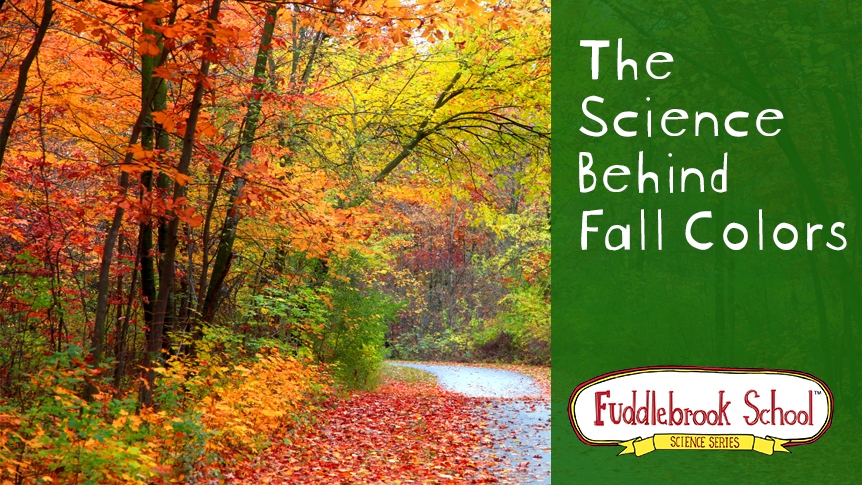In our part of the world, the trees are not so vividly colorful this year. Why does this spectacular show vary from year to year and tree to tree? And, did you know yellow and orange colors have actually been there throughout the spring and summer, but we haven’t been able to see them? The deep green color of chlorophyll, which helps plants absorb life-giving sunlight, hides the other colors. In the fall, trees break down the green pigments and nutrients stored in the leaves. The nutrients are shuttled into the roots for reuse in the spring. As the leaves lose their chlorophyll, those other pigments become visible to the human eye. Some tree leaves will turn mostly brown, indicating that all pigments are gone.

Burgundy and red colors are a different story. Says Dana A. Dudle, a DePauw professor of biology who researches red pigment in plant flowers, stems and leaves, “The red color is actively made in leaves by bright light and cold. The crisp, cold nights in the fall combine with bright, sunny days to spur production of red in leaves – especially in sugar maple and red maple trees. Burgundy leaves often result from a combination of red pigment and chlorophyll. Autumn seasons with a lot of sunny days and cold nights will have the brightest colors.” And in some cases, about half of a tree’s leaves are red/orange and the other half green. Dudle says that results from environmental factors – such as only half the tree being exposed to sunlight or cold.
So that might explain the less than spectacular color show we’re getting this year in the Midwest. We just haven’t had that many crisp nights. Summer-like temperatures keep hanging on!
Climate isn’t the only factor though that impacts color. Some trees just naturally put on a better color show than others. Hardwoods in the Midwest and on the East Coast are famous for good color selections. Some of the more reliably colorful trees include Sugar and Red Maples, Sassafras, Aspen, Sweet Gum, Sourwood, and Black Tupelo, according to the Arbor Day Foundation.

So what is the colors’ purpose? Scientists think that with some trees, pigments serve as a kind of sunscreen to filter out sunlight. It may surprise some to know that plants, like humans, can’t take an infinite amount of sun. Some leaves, if they get too much sun, will get a “sunburn.” Too much sun can stress them out and they might even die.
Another theory is that the color of a plant’s leaves is often related to the ability to warn away pests or attract insect pollinators. One of the more intriguing scientific theories is that the beautiful leaf colors we see today are indicative of a relationship between a plant and insects that developed millions of years ago. However, as the Earth’s climate changed over the years, the insects might have gone extinct, but the plant was able to survive for whatever reason. Because the plants evolve very slowly, we still see the colors. So leaf color is a fossil memory, something that existed for a reason millions of years ago but that serves no purpose now.
Whatever the reason for the change of color in the fall, take some time to enjoy it! Also read the Fuddlebrook story, Liza’s Colorful Tale, where she takes in the glorious colors of the season, to learn more about the science of color.

